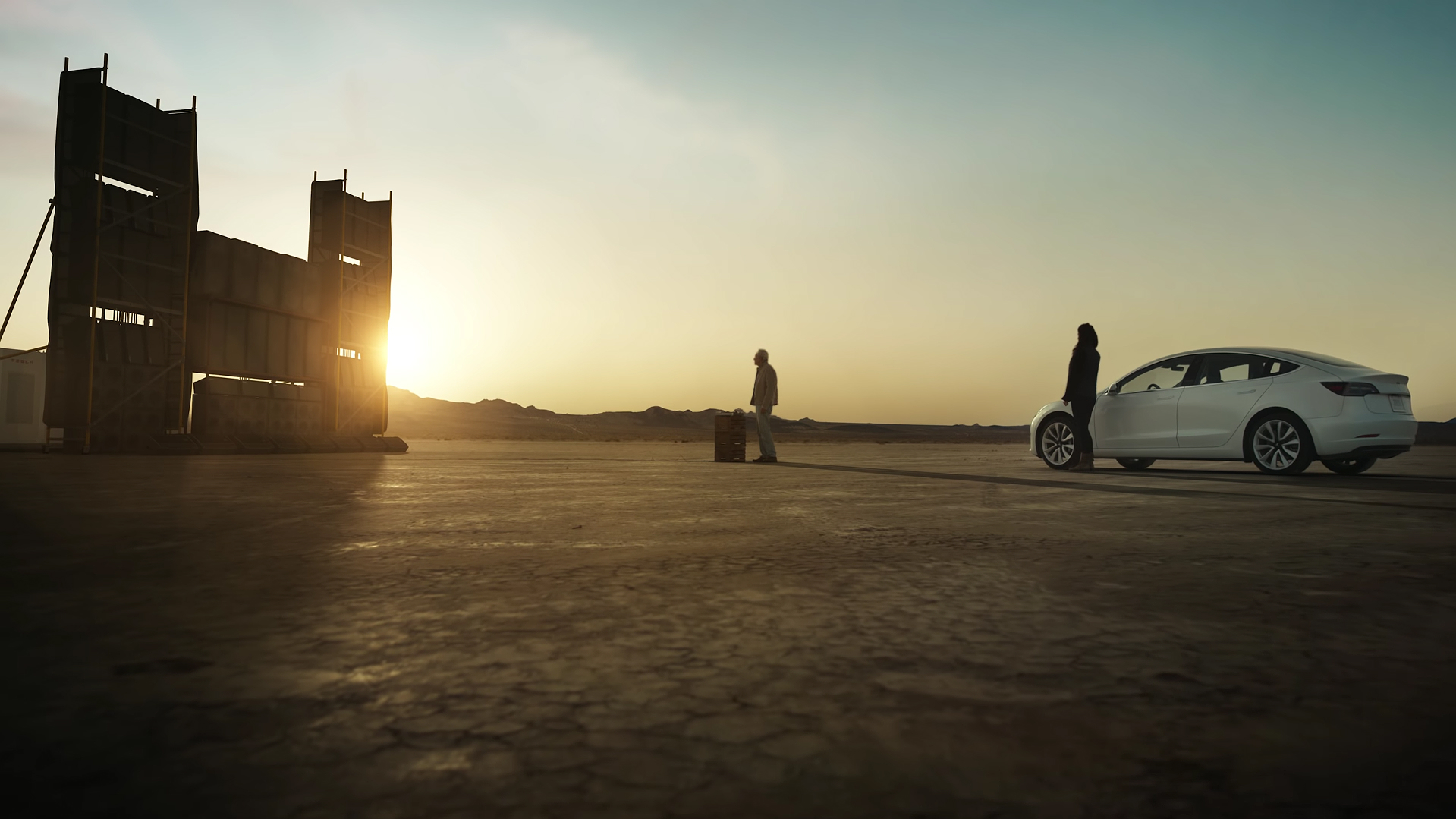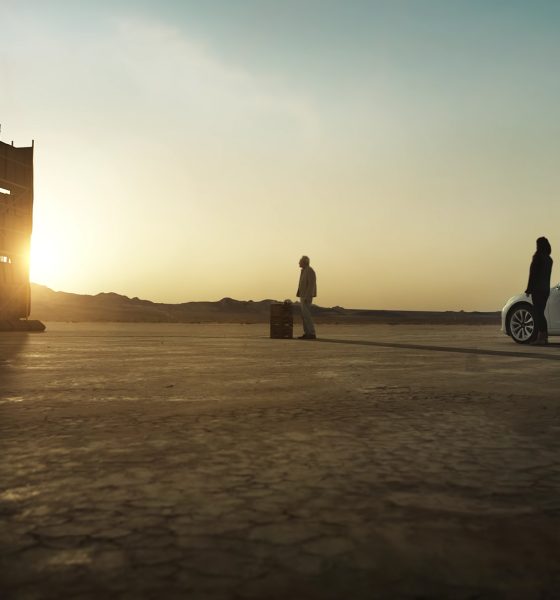

Lifestyle
Tesla Model 3 fan-made commercial invokes the elusive ‘soul’ of electric cars
Tesla fan and filmmaker Jono Seneff once drove his father’s Model S 75D, and it gave him an experience unlike any other. Jono knew the specs of the vehicle prior to his drive, such as its 0-60 mph time, its battery capacity, and its range per charge. But once he stepped on the accelerator, he realized that Tesla’s electric cars are more than just fun facts and figures — they are about that special feeling that one experiences when trying out something new for the first time.
These thoughts formed half of the inspiration behind the filmmaker’s latest project — a fan-made commercial for the Tesla Model 3 recently shared on Jono’s YouTube channel. The 90-second commercial, which would not be out of place beside the best entries in Tesla’s Project Loveday contest last year, deals with the theme of feeling, and of experiencing (and re-experiencing) things. Jono provided some details about his fan-made Model 3 commercial to Teslarati through email, where he discussed the inspiration behind his project, as well as some fun Tesla-themed Easter Eggs he included in the ad.
Jono notes that his fan-made Model 3 commercial was inspired by a dream he once had of a deaf organist blasting music in the desert, as well as his personal experiences with a Model S. A Long Range RWD Model 3 was used as the main vehicle in the ad, and it was shot with the help of volunteers from his fellow USC cinema graduate students. Ultimately, the project took a long time to accomplish, with work starting back in April in and around Los Angeles.
Following is an excerpt from the filmmaker’s message describing the project.
“My dad got the Model S 75D about two years ago. Over the holidays I was able to drive it. Everything that I had read about Tesla – the 0-60 stats, the production process, how the batteries work, all of that just fell away as I was pulling away from the stoplight. There is that inevitable stupid grin that creeps onto your face when you accelerate like that for the first time. This all made me think about what a Tesla commercial should really be about. It’s about feeling something. It’s not about knowing facts and figures; it’s about that uncontrollable stupid grin on your face as you silently accelerate out of a turn.
“I ended up trying to combine that feeling with this deaf Beethoven character from my dreams who longed to experience music again. Beethoven famously would put his body against the piano to feel the vibrations of his late compositions. Although Beethoven and my main character weren’t able to hear music again, they were able to feel it. In the end, the unperformed sheet music or the statistical data on Tesla’s website are ultimately unrelated to that feeling that can only be experienced. And trust me — whipping around the desert in the RWD Model 3 was just that. In fact, the final shot of the spec is actually me in the car by myself just gunning it towards the horizon.”
Jono also mentioned that the commercial includes some fun Easter Eggs related to the company’s other products and one of CEO Elon Musk’s favorite literature. Among these is a Powerwall 2 battery (placed cleverly at the latter half of the commercial), as well as references to characters in Isaac Asimov’s Foundation Series.
This particular fan-made Tesla Model 3 commercial is notable in the way that it invokes that all-elusive “soul” referenced by car enthusiasts about vehicles they are fond of. Being absent of any engine noise, Tesla’s electric cars have been criticized for having no soul by critics. This particular point was highlighted by Porsche in its teaser for the Taycan (formerly known as the Mission E) earlier this year, when the German veteran automaker noted that their upcoming all-electric sedan and Model S competitor would be an electric car with soul.
“All Porsche models have something in common: They have a soul. A certain feeling you get as a driver as soon as you get behind the wheel. Soon, the Porsche Taycan is coming. And although his heart is powered by a different force – electricity – the soul, once again, is the same.”
As this recent fan-made Model 3 commercial shows, Tesla’s vehicles do have a soul, though it is not found in the form of an angry internal combustion engine roaring to life as the driver presses on the accelerator. Rather, it is an entirely different feeling — one that could only be fully understood and experienced behind the wheel of Tesla’s electric cars.
Watch Jono Seneff’s fan-made Tesla Model 3 commercial in the video below.

Lifestyle
Tesla Model S Plaid battles China’s 1500 hp monster Nurburgring monster, with surprising results
There is just something about Tesla’s tuning and refinement that makes raw specs seem not as game-changing.

The Tesla Model S Plaid has been around for some time. Today, it is no longer the world’s quickest four-door electric sedan, nor is it the most powerful. As per a recent video from motoring YouTube channel Carwow, however, it seems like the Model S Plaid is still more than a match for some of its newer and more powerful rivals.
The monster from China
The Xiaomi SU7 Ultra is nothing short of a monster. Just like the Model S Plaid, it features three motors. It also has 1,548 hp and 1,770 Nm of torque. It’s All Wheel Drive and weighs a hefty 2,360 kg. The vehicle, which costs just about the equivalent of £55,000, has been recorded setting an insane 7:04.957 at the Nurburgring, surpassing the previous record held by the Porsche Taycan Turbo GT.
For all intents and purposes, the Model S Plaid looked outgunned in Carwow’s test. The Model S Plaid is no slouch with its three motors that produce 1,020 hp and 1,420 Nm of torque. It’s also a bit lighter at 2,190 kg despite its larger size. However, as the Carwow host pointed out, the Model S Plaid holds a 7:25.231 record in the Nurburgring. Compared to the Xiaomi SU7 Ultra’s record, the Model S Plaid’s lap time is notably slower.
Real-world tests
As could be seen in Carwow’s drag races, however, Tesla’s tech wizardry with the Model S Plaid is still hard to beat. The two vehicles competed in nine races, and the older Model S Plaid actually beat its newer, more powerful counterpart from China several times. At one point in the race, the Xiaomi SU7 Ultra hit its power limit due to its battery’s temperature, but the Model S Plaid was still going strong.
The Model S Plaid was first teased five years ago, in September 2020 during Tesla’s Battery Day. Since then, cars like the Lucid Air Sapphire and the Xiaomi SU7 Ultra have been released, surpassing its specs. But just like the Model Y ended up being the better all-rounder compared to the BYD Sealion 7 and the MG IM6, there is just something about Tesla’s tuning and refinement that makes raw specs seem not as game-changing.
Check out Carwow’s Model S Plaid vs Xiaomi SU7 drag race video below.
Lifestyle
500-mile test proves why Tesla Model Y still humiliates rivals in Europe
On paper, the BYD Sealion 7 and MG IM6 promised standout capabilities against the Model Y.

BYD is seeing a lot of momentum in Europe, so much so that mainstream media has taken every opportunity to argue that the Chinese automaker has beaten Tesla in the region. But while BYD sales this year in Europe are rising and Tesla’s registrations remain challenged, the raw capabilities of vehicles like the Model Y are difficult to deny.
This was highlighted in a 500-mile challenge by What Car? magazine, which showed that the new Tesla Model Y is more efficient, cheaper to run, and more reliable than rivals like the BYD Sealion 7, and even the nearly 400 KW-charging MG IM6.
Range and charging promises
On paper, the BYD Sealion 7 and MG IM6 promised standout capabilities against the Model Y. The Sealion 7 had more estimated range and the IM6 promised significantly faster charging. When faced with real-world conditions, however, it was still the Model Y that proved superior.
During the 500-mile test, the BYD nearly failed to reach a charging stop, arriving with less range than its display projected, as noted in a CarUp report. MG fared better, but its charging speeds never reached its promised nearly-400 kW charging speed. Tesla’s Model Y, by comparison, managed energy calculations precisely and arrived at each stop without issue.
Tesla leads in areas that matter
Charging times from 25% to 80% showed that the MG was the fastest at 17 minutes, while Tesla and BYD were close at 28 and 29 minutes, respectively. Overall efficiency and cost told a different story, however. The Model Y consumed 19.4 kWh per 100 km, compared to 22.2 for MG and 23.9 for BYD. Over the full trip, Tesla’s charging costs totaled just £82 thanks to its supercharger network, far below BYD’s £130 and MG’s £119.
What Car? Magazine’s testers concluded that despite BYD’s rapid sales growth and the MG IM6’s seriously impressive charging speeds, Tesla remains the more compelling real-world choice. The Model Y just offers stability, efficiency, and a proven charging infrastructure through its Supercharging network. And as per the magazine’s hosts, the Model Y is even the cheapest car to own among the three that were tested.
Watch What Car? Magazine’s 500-mile test in the video below.
Lifestyle
Tesla Cybertruck slapped with world’s least intimidating ticket, and it’s pure cringe
One cannot help but cringe and feel second-hand embarrassment at the idea of a person just driving around with a stack of these babies.

A Cybertruck parked at Stanford Shopping Center in California was recently hit with what might be the most try-hard piece of paper ever slipped under a wiper blade: a “fake citation” accusing the driver of supporting a “fascist car.”
The note, shared on X by Tesla staff program manager Ryan Torres, quickly made the rounds on X, where it quickly gained attention as an example of how not to protest.
The world’s least intimidating ticket
According to the citation, the supposed “violation” was “driving a fascist car.” The remedial action? Take the bus, call an Uber, or ride a bike. The note also dubbed Elon Musk a “chainsaw-wielding Nazi billionaire.” Now, protests against Tesla and Elon Musk have become commonplace this year, but one cannot help but cringe and feel second-hand embarrassment at the idea of a person just driving around with a stack of fake anti-Tesla/Musk citations.
Torres pointed out the irony himself in his post on X. Tesla currently employs over 140,000 Americans, and SpaceX has put the U.S. firmly back at the top of space technology. As Torres put it, maybe the person behind the world’s least intimidating ticket should “read a book on innovation before vandalizing” other people’s property.
Peak performative clownery
Not to mention that the fake ticket’s logic collapses under its own weight. EVs like the Cybertruck are literally designed to reduce emissions, not “destroy the economy.” If anything, Tesla has bolstered the United States’ economy by fueling jobs in engineering, manufacturing, and clean energy. It’s not the first time a Tesla has been the target of vandalism or politically charged notes, but this one stands out for sheer cringe value.
Torres summed it up neatly: “Peak clownery.” On that point, at least, the citation earns full marks. In a way, though, perhaps cringe fake tickets are not as bad as the literal firebombs that were being thrown at Tesla stores and cars earlier this year because some critics were gleefully misinformed about Elon Musk.








